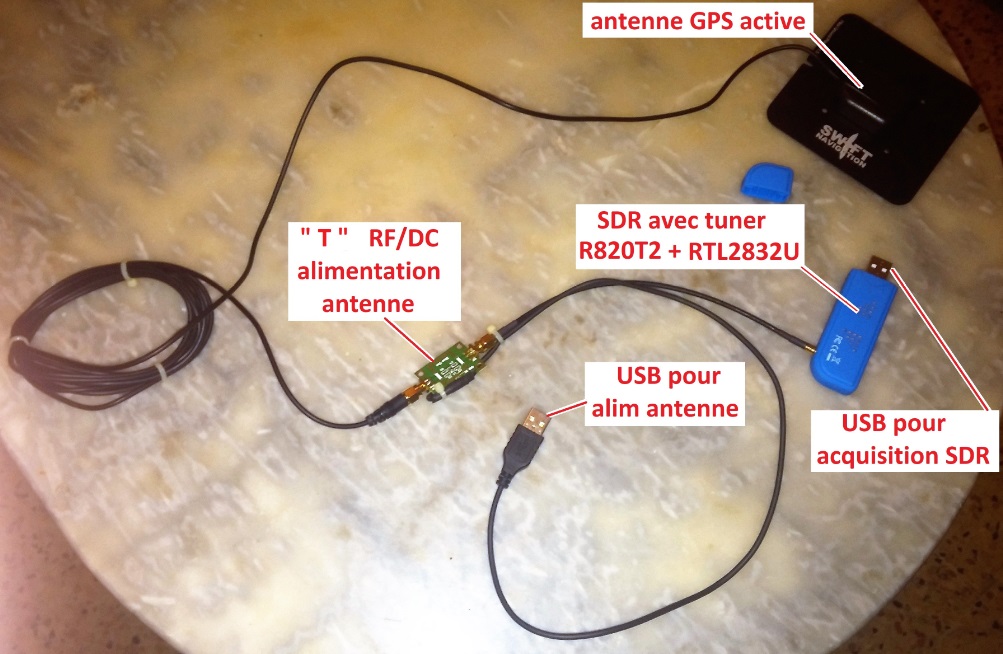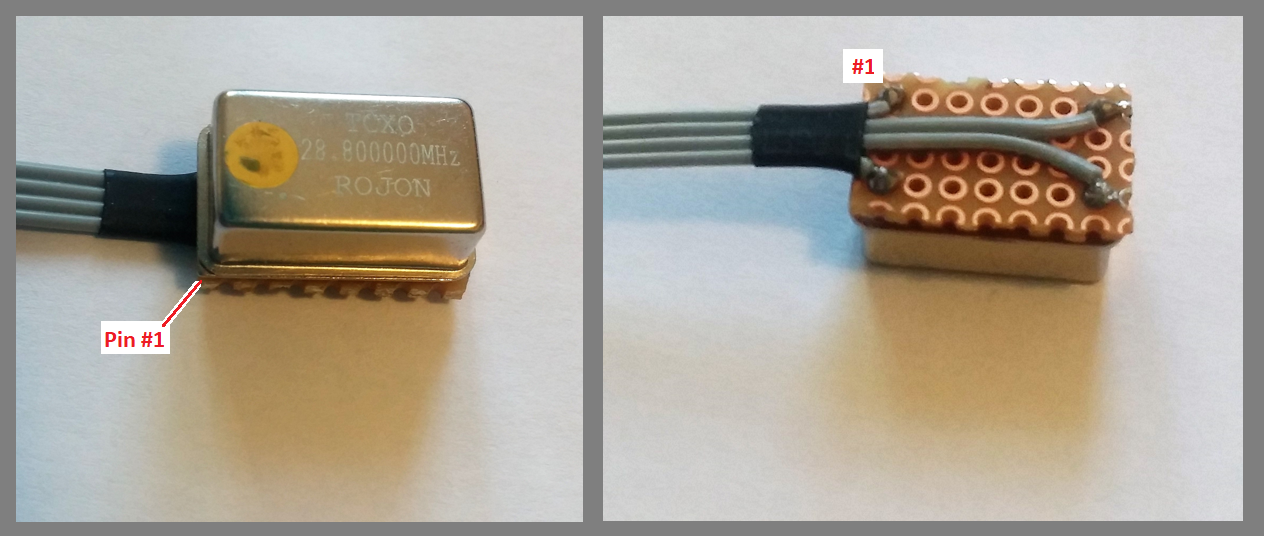-
Notifications
You must be signed in to change notification settings - Fork 0
Home
The following picture gather all the hardware required to operate the SDR-GNSS:
o The core is the SDR itself with R820T2 tuner and RTL2832U USB interface. This item was purchased here.
o The antenna that is delivered with the SDR is for TV reception. No chance to receive any GNSS signal with this one. A GNSS-dedicated antenna is mandatory. Moreover, the SDR tuner is not sensitive enough to cope with GNSS signals through a passive antenna. An amplified antenna (AKA active antenna) is necessary. I reused the antenna that was delivered with the 1st generation Piksi from Swift Navigation that I bought for benchmarking purposes sometimes ago. An amplified GNSS antenna can also be bought from several cheap sources.
o The SDR doesn’t provide any DC current on its antenna port. It is therefore necessary to provide a power supply to the amplified antenna. This requires a bias feed “T” properly connected between the amplified antenna and the SDR tuner antenna port.
o Last, some wires are necessary to pick some DC supply from an USB port ; and for adapting the SDR tuner connector to the “T” RF connector.

For the 1st tentative, I used GNSS-SDRLIB and RTKLIB_bin-rtklib. Despite a carefull respect of the procedure in the user manuals, I didn't succed to track any GNSS SV (Space Vehicle) signal. Some forums gave me the root cause: the frequency accuracy of the SDR tuner isn't accurate enough. Explanations: a GNSS receiver hs to cope with some Doppler shift due to SV's velocity. The Doppler shift is rather huge when compared with GNSS SVs clocks accuracy (<1PPB), but it turns to bee peanuts when compared with SDR clock accuracy (several PPMs). Hence I purshased an accurate TCXO (frequency offset <0.5PPM)
